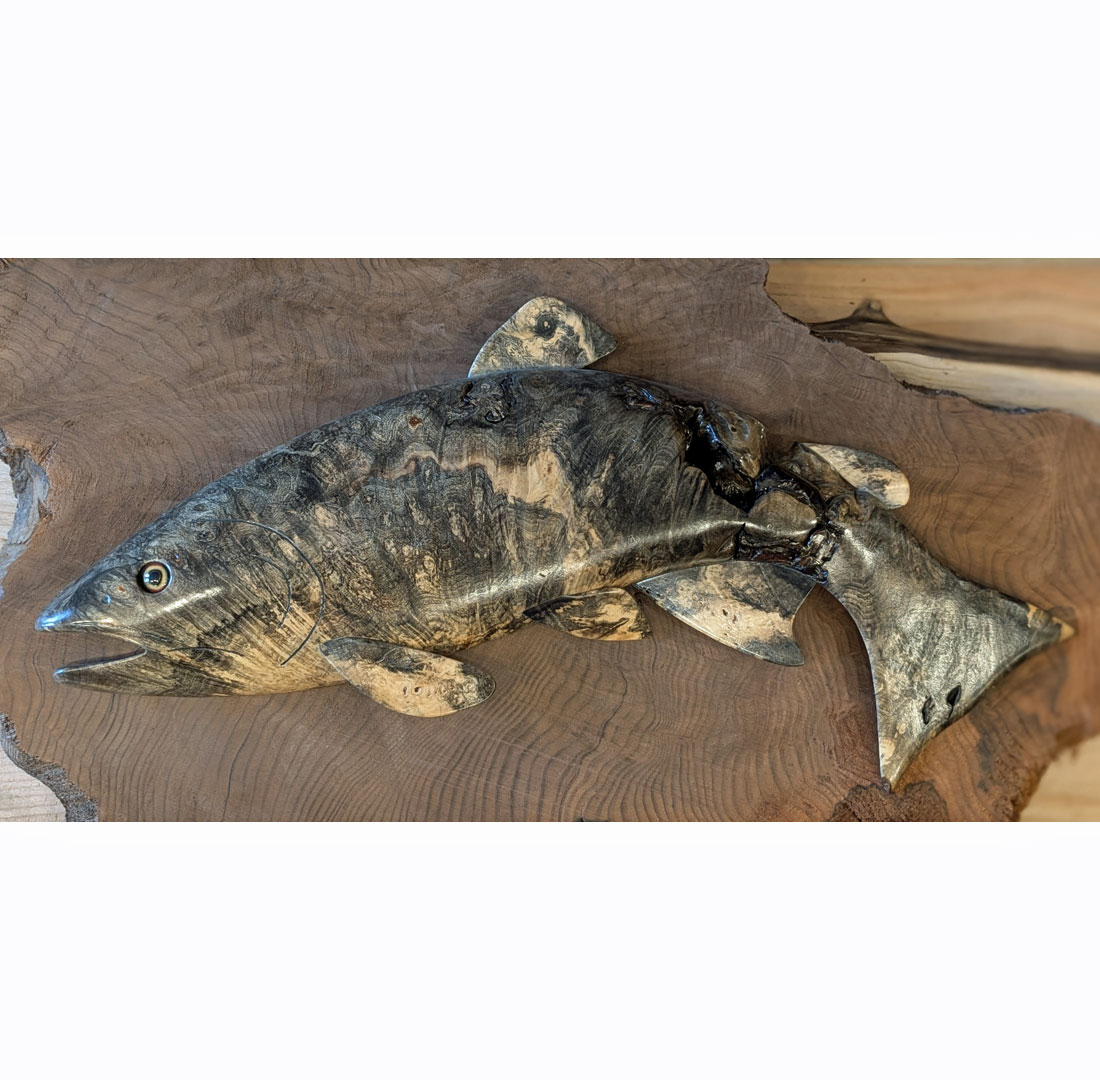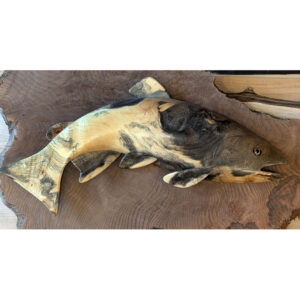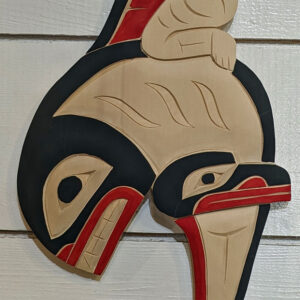Buckeye Wall Salmon, Left Facing, Leaping #1
Gorgeous wall art depicts a left-facing leaping salmon fish, piece #1. The material used is California Buckeye, a burl known for amazing contrast and variation of figuring. Colors of the wood range from cool steely gray to bright creamy with with dark browns and golds also possible. Measures 22 x 11 x 2, priced at $445.
Shipping: We prefer to have buyers of these particularly delicate carvings stop in for local pickup. We are happy to assist with your purchase. Please make a note of the title of the individual carving that you would like to inquire about and contact the gallery for more information about how we prefer to ship these carvings, when we ship them at all. Thank you for your patience and understanding.
This carver is located near Spokane, WA. He retired from a career as an electrician and now carves full-time. His work is shown in several Pacific Northwest fine art galleries.
Aesculus californica, commonly known as the California buckeye or California horse-chestnut, is a large deciduous shrub or small tree in the Chestnut family native to California and southwestern Oregon. It has an estimated lifespan between 250-280 years.
The flowers are sweet-scented, white to pale pink. The tree bears a large, round, orange-brown seed in a leathery case containing the seeds, which are poisonous. Local Native American tribes, including the Pomo, Yokut, and Luiseño, used the poisonous nuts to stupefy schools of fish in small streams to make them easier to catch.
The nectar of the flowers is toxic to the exotic Asian/European honeybee, so the trees should not be planted near apiaries. The flowers are a rich nectar source for many species of native butterflies.
The slabs used for buckeye burl slabs and carvings come from the root ball of the tree. They can be as large as sixteen feet in diameter. The trunks of the trees are used for creating art as well, as bases to support tables, etc. The root ball is removed from the earth and allowed to sit and “weather” for a year or two. This exposure to the heat of summer and the rain and cold of the winter allows leaching of the minerals imbedded in the root ball. The growth of fungi and bacterial action all contribute to the unique coloration found in buckeye.





